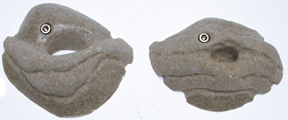
Geotimes Home | AGI Home | Information Services | Geoscience Education | Public Policy | Programs | Publications | Careers

 Climbing
indoors using artificial holds is a relatively new phenomenon. In Europe in the
mid-1980s, “people were trying to find new ways to train,” says Matt
Stanley, equipment editor for Climbing magazine. Climbers were finding
more and more difficult climbing routes and needed to physically prepare before
attempting the real thing. “There was a new focus on gymnastic movement and
power and endurance,” Stanley says, so people began to fashion climbing holds
out of wood, ladder rungs and other everyday objects to train at home.
Climbing
indoors using artificial holds is a relatively new phenomenon. In Europe in the
mid-1980s, “people were trying to find new ways to train,” says Matt
Stanley, equipment editor for Climbing magazine. Climbers were finding
more and more difficult climbing routes and needed to physically prepare before
attempting the real thing. “There was a new focus on gymnastic movement and
power and endurance,” Stanley says, so people began to fashion climbing holds
out of wood, ladder rungs and other everyday objects to train at home. |
Geotimes Home | AGI Home | Information Services | Geoscience Education | Public Policy | Programs | Publications | Careers |